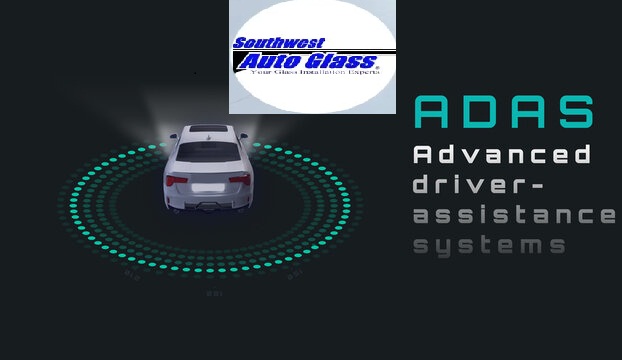
Advanced Driver Assistance Systems (ADAS) stand out as a disruptive force in the rapidly developing field of automobile technology, transforming the way we drive and perceive road safety. These advanced systems incorporate cutting-edge sensors, cameras, and algorithms to improve vehicle safety, offering drivers a variety of features aimed at minimizing accidents and improving overall driving experiences. We will delve into the terrain of ADAS in this complete examination, revealing its functions, benefits, and the vital role it plays in creating the future of driving.
Understanding ADAS Components and Features
1. Adaptive Cruise Control (ACC): ACC changes the speed of a vehicle to keep a safe following distance from the vehicle ahead. This feature not only decreases driver fatigue on lengthy trips, but it also improves overall safety by reducing the likelihood of rear-end incidents.
2. Lane Departure Warning and Lane-Keeping Assist: Lane Departure Warning notifies the driver when the car drifts out of its lane unintentionally, while Lane-Keeping Assist actively intervenes to steer the vehicle back into its lane. These features help to prevent accidents caused by unintentional lane departures.
3. Automatic Emergency Braking (AEB): AEB systems detect an impending collision and deploy the brakes automatically if the driver fails to respond quickly. This function is critical in decreasing the severity of accidents and, in some cases, completely averting them.
4. Blind Spot Detection and Cross Traffic Alert: These features monitor blind spots and deliver warnings when vehicles approach from the side or rear, lowering the risk of crashes during lane changes and reversing movements.
5. Collision Warning and Avoidance Systems: Collision warning systems alert drivers to possible crashes and, in certain situations, actively intervene to avoid or mitigate the effect.
6. Parking aid: Automated parking aid systems employ sensors and cameras to assist drivers in parallel and perpendicular parking, making parking motions more efficient and lowering collision risk.
The Advantages of ADAS Implementation
1. Improved Safety: One of ADAS’s key goals is to improve road safety by reducing the number and severity of accidents. The capacity of the system to monitor the vehicle’s surroundings and respond to possible hazards improves overall safety for both drivers and passengers.
2. Reduced driver tiredness: Features such as ACC and Lane-Keeping Assist help to reduce driver tiredness during lengthy travels by assisting with maintaining a constant speed and staying inside lanes. This, in turn, increases driving awareness.
3. Common Accident Prevention: ADAS capabilities like AEB and blind-spot recognition are critical in preventing common types of accidents such as rear-end collisions and collisions during lane changes.
4. Improved Traffic Flow: By changing speeds to maintain ideal distances between vehicles, adaptive cruise control not only adds to individual safety but also helps to create smoother traffic flow.
5. Insurance Benefits: Some insurance companies provide discounts for vehicles equipped with ADAS, which are acknowledged for their ability to lower the likelihood of accidents and improve overall safety.
Considerations and Obstacles
While the benefits of ADAS are great, there are some issues to consider:
1. Repair prices: The advanced technology in ADAS-equipped automobiles can result in increased repair prices. Replacing or repairing ADAS components after a collision or malfunction may necessitate specific knowledge and equipment.
2. Maintenance and Calibration: Routine maintenance and calibration of ADAS components are required to maintain proper operation. Even basic activities such as windshield repair can influence ADAS calibration, highlighting the significance of professional services.
3. Driver Overreliance: There is a risk that drivers will become overly reliant on ADAS features, which could lead to complacency. It is critical for drivers to remain involved and vigilant, perceiving ADAS as a supplement rather than a replacement for safe driving.
Southwest Auto Glass’s Role in ADAS Calibration
As vehicles become more technologically advanced, ensuring the appropriate calibration of ADAS components becomes increasingly important. Southwest Auto Glass, which serves El Paso, Alamogordo, and Las Cruces, understands the need for precise ADAS calibration to sustain optimal system operation.
Why Should You Go with Southwest Auto Glass for ADAS Calibration?
Experience and expertise: Southwest Auto Glass has a staff of professional technicians who are knowledgeable about ADAS calibration. Their expertise ensures perfect calibration, ensuring that your vehicle’s safety features remain accurate.
State-of-the-Art Equipment: Southwest Auto Glass uses cutting-edge calibration instruments to ensure that your vehicle’s ADAS components are calibrated to manufacturer requirements, ensuring dependable functionality.
Comprehensive Services: Southwest Auto Glass provides a wide range of auto glass services, including windshield replacement and repair, in addition to ADAS calibration. Their comprehensive method protects your vehicle’s entire integrity and safety.
Customer-Centric Approach: Committed to customer satisfaction, Southwest Auto Glass stresses open communication and speedy services, giving drivers peace of mind about the effective operation of their ADAS systems.
ADAS represents a significant advancement in automobile safety and technology. While enjoying the benefits of these systems, it is critical to be aware of the challenges as well as the necessity for frequent maintenance and calibration. Southwest Auto Glass is a dependable partner for residents of El Paso, Alamogordo, and Las Cruces, providing experienced ADAS calibration service to keep your vehicle’s safety features in top shape. Southwest Auto Glass will ensure that your travel is not only technologically sophisticated but also safe and secure. Request a FREE quote today!
